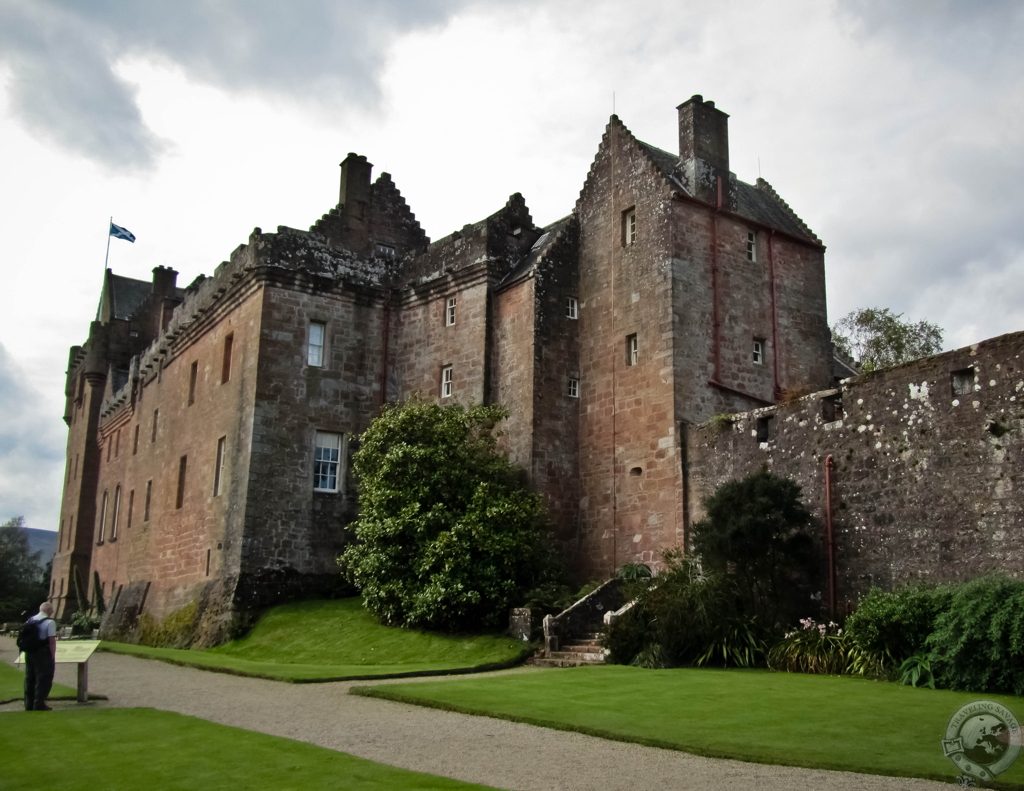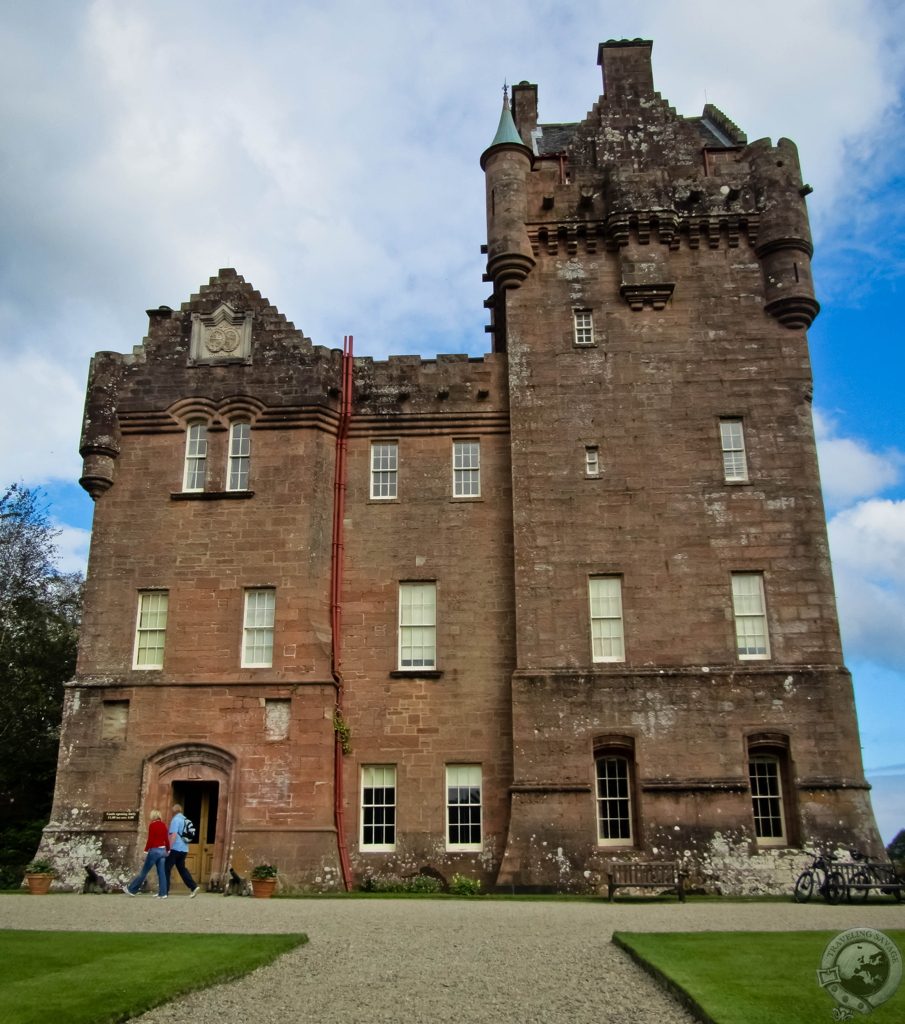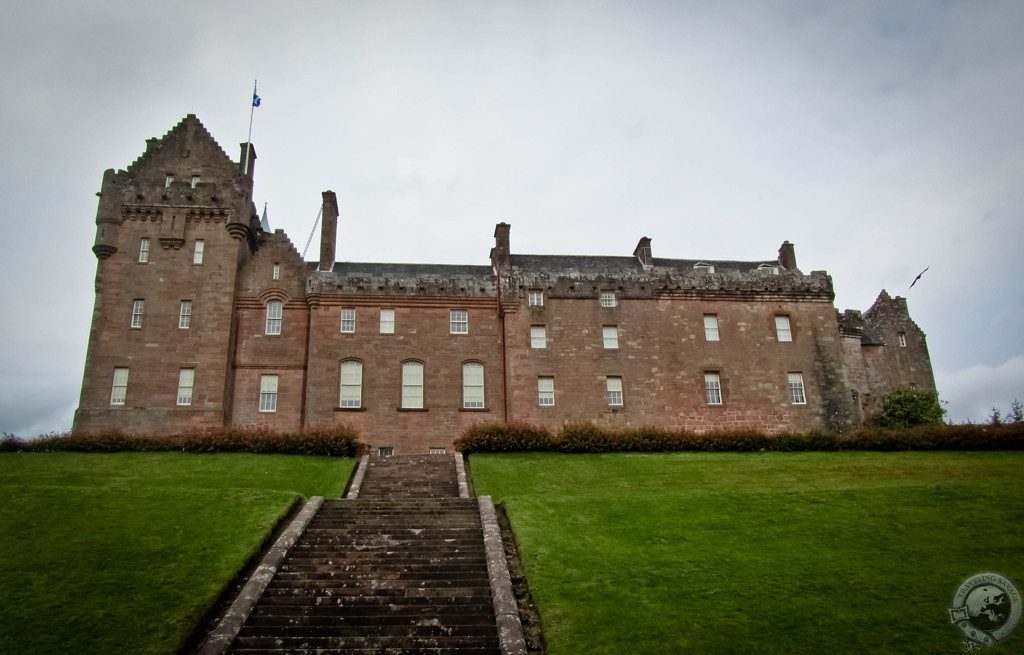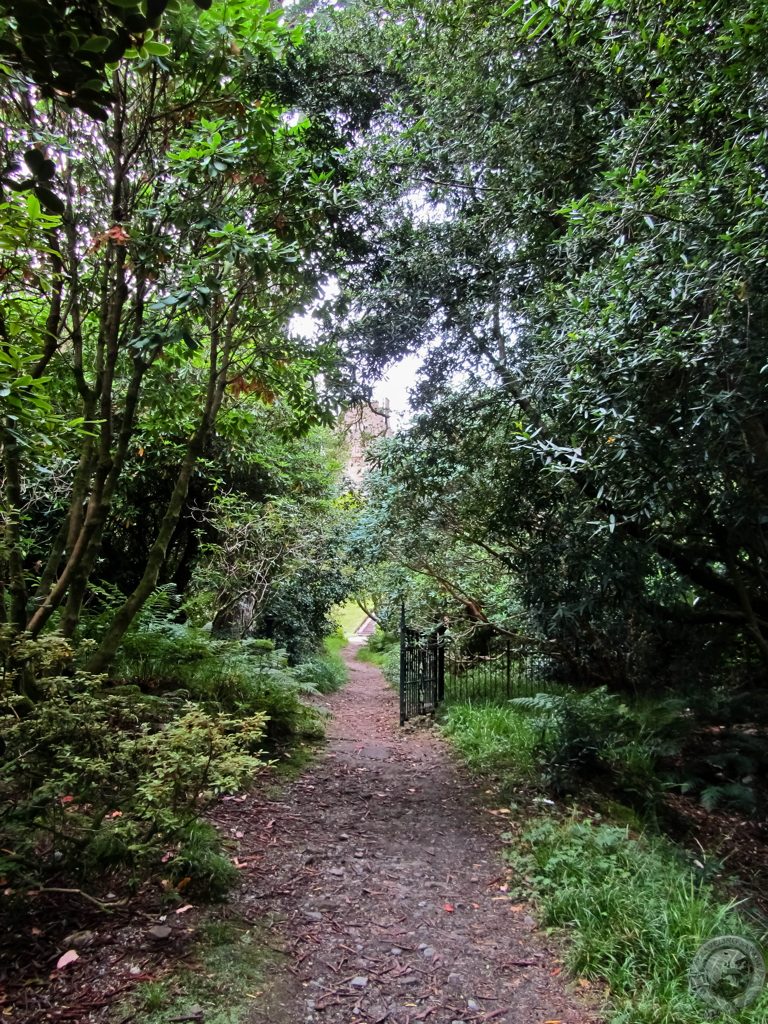The Isle of Arran’s Brodick Castle has borne witness to the ebb and flow of mankind for 15 centuries. That’s a pretty epic achievement for a little castle on a little island off the coast of a little country. I have a bit of history with the castle, too, though it only stretches back five years. Sarah and I visited it for the first time in 2006, and I remembered it as one of my favorite castles on that trip. When I returned to the stout, red castle in the woods across the bay from Brodick town, little had changed. After all, what’s five years in the context of 1,500?
It’s safe to say that the Brodick Castle of today wasn’t around in the fifth century when Gaels from Northern Island landed on Arran intent on expanding their kingdom of Dál Riata. Nor was it standing in the 10th century when Norsemen ruled Arran along with much of Scotland’s present western and northern isles. By the 13th century, however, parts of the present castle did exist as the Scottish waged wars of independence against the English. While it may not have been the same castle all those years, iterations of fortresses have guarded this strategic position along the Firth of Clyde. Think of it as a castley family tree.
I arrived to Brodick Castle on a sunny Thursday – on the first day of my trip – with my trusty National Trust for Scotland pass. On first glance, the castle is blocky with red sandstone facades and moderately high parapets. I’m no authority on architecture, but it reminds me of the Victorian exteriors of other castles I’ve visited. You couldn’t ask for a more majestic situation: the sea spreads out through the woods in front of the castle while the island’s tallest hill, the Goatfell, rears up behind.
The wow factor upon entering the castle is huge: columns of stag’s heads climb seemingly indefinitely toward a very high ceiling. There’s a cozy, homey feel inside and a slight wet dog smell that makes me wonder if there’s been water damage. Like many NTS properties, they don’t offer guided tours but position quiet retirees in each room who have memorized the history of the castle. It’s a system that works because it allows the visitor to browse the castle at his own pace yet still provides opportunities for additional information.
Brodick Castle has that typical “faded elegance” feel that’s so common in many of Scotland’s castles. There’s a good reason for this: the castle, including all its furnishings and family treasures, entered into the NTS’ care in the 1950s in lieu of death taxes on the passing of the Dowager Marchioness of Montrose. The castle appears today as it appeared in the 1950s, a kind of locked-in-time museum.
The interior contains some opulent rooms and hallways that hint at the wealth of the Hamiltons, the family that owned Brodick Castle for 600 years prior to the NTS. Crystal, China, silverware, and rare and ornate furnishings are pointed out in each room, though I breeze past these details in favor of history and architecture. The oldest parts of Brodick Castle date back to the 13th century, and there have been additions in the 16th, 17th, and 19th centuries. The plasterwork ceiling in the Withdrawing room is noteworthy for all of the intricate, gilded family crests, and the Victorian Kitchen and Scullery downstairs is a rare look at how meals were prepared and served to the nobility.
As usual, my favorite spot was the oldest in the castle: The Bruce’s Room. A rough-hewn circular stair peeks out of the otherwise unremarkable and sterile hall leading to the castle café and curls up to a small, barred chamber. There, in typical NTS fashion, a freaky mannequin prisoner sits. It’s not clear if this was actually used as a jail cell or if Robert the Bruce even stayed at Brodick Castle, but the Bruce’s presence on the island in the early 14th century is well documented.

Brodick Castle also maintains some beautiful grounds with trails leading through forests and up the Goatfell, as well as an artistic garden. Don’t miss the weird Bavarian Summer House in the woods facing the sea. Finally, there are a couple ghostly tales associated with the castle (of course). The specter of a “grey lady” who died of starvation and the plague in the castle’s dungeon is said to haunt the oldest part of Brodick Castle, and, in Rowling-esque fashion, a white deer has been seen on the castle grounds whenever a chief of the Hamiltons is close to death.
Ghosts, Gaels, Norse, English: Brodick Castle has a little bit of everything in its history. When you make it to Arran, it’s definitely a worthy addition to your own personal history.
Disclosure: I visited Brodick Castle with a Guest Pass provided by The National Trust for Scotland. All thoughts and opinions expressed here are my own.





Wonderful! Your historical vignette makes me feel as though I know something of this castle. It definitely makes me want to visit it. Could I but go back in time just for a day (I’m sure that would be enough. Life was harder, I’m afraid, than I’m prepared for).
The past always seems romantic as I sit here typing on magical devices that send thoughts and images around the world instantaneously.
It paints an excellent picture. I went to Brodick Castle and up Goat’s Fell, but had no idea about a lot of this.
You made it up the Goatfell – very cool! How was the hike?
those mannequins freak me out. i want to go here, despite him. 🙂 thanks for the great, moving description!